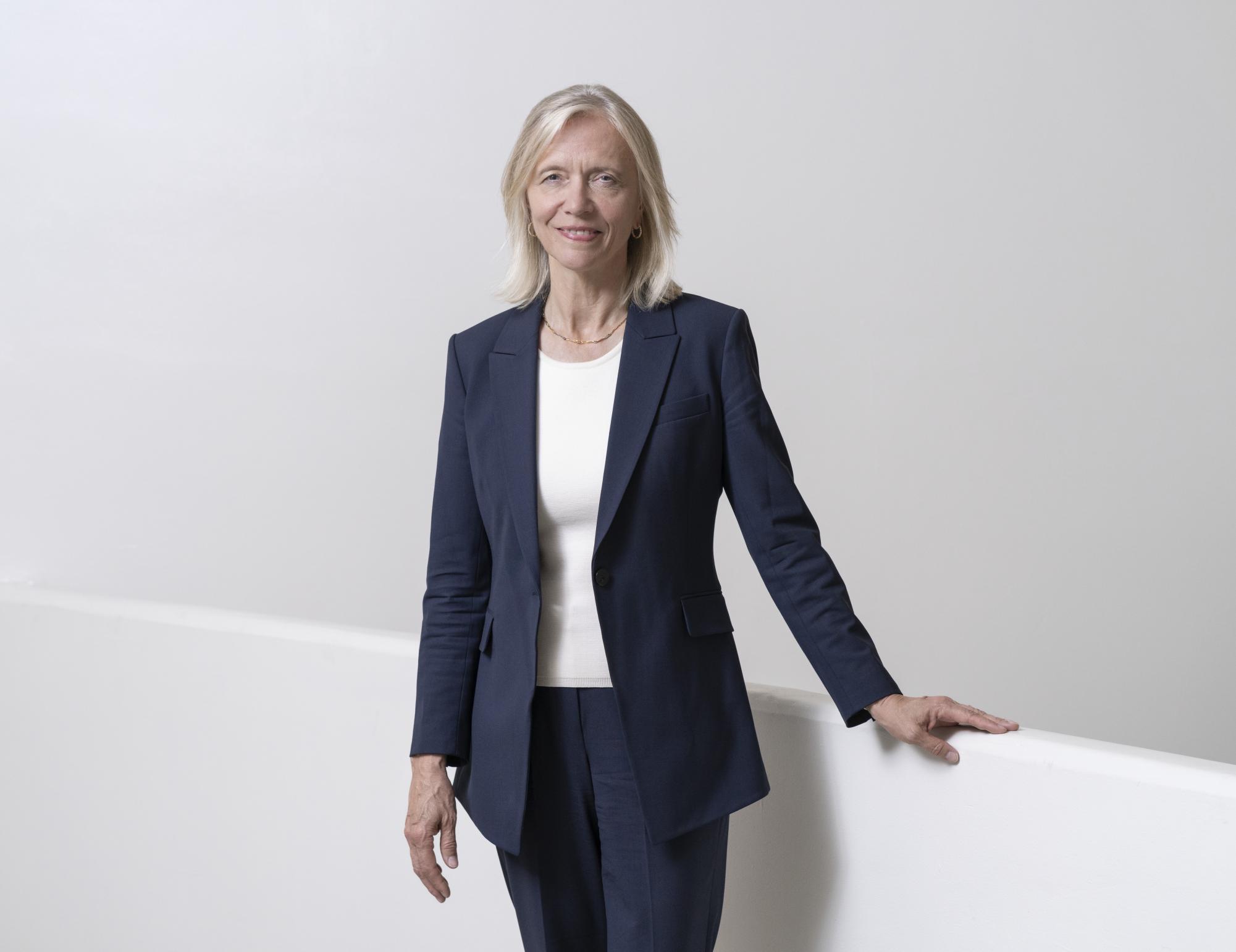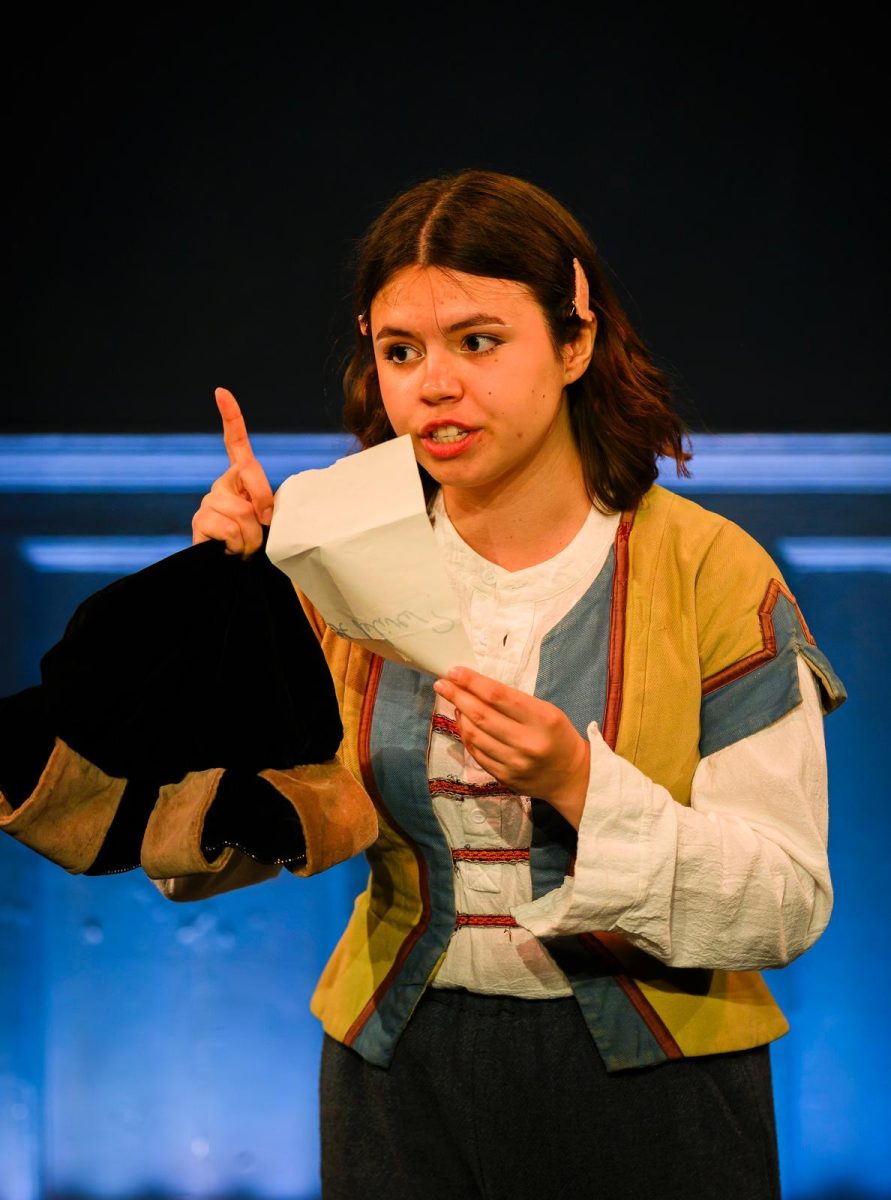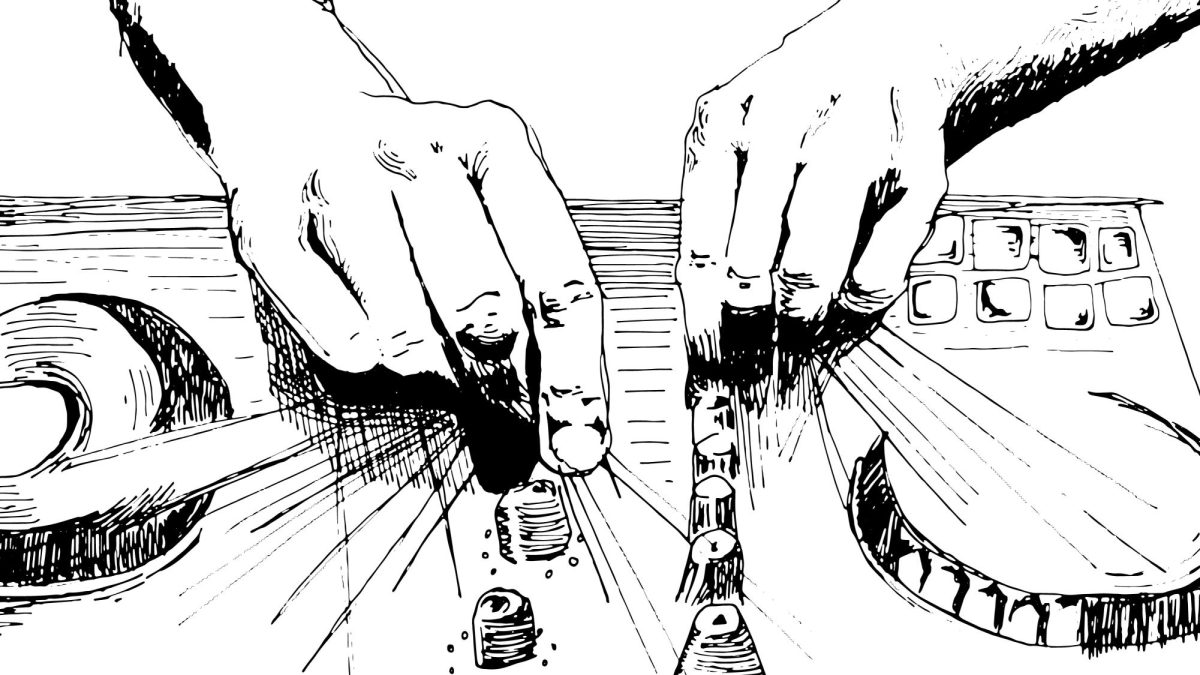
Famed singer-songwriter Cole Porter lived his later years in Williamstown. I learned this fact last weekend when I visited what was once his cabin. Mariët Westermann ’84, who now owns the expanded and remodeled Porter home, walked me through its hallways, directing my focus to the artwork adorning the walls, the original woodwork framing the living room, and the squirrel scurrying outside in the garden. In those early minutes of my visit, one thing had already become abundantly clear: I was in the presence of someone who pays attention.
After my walk through the home, Westermann and I migrated to her kitchen. “What can I get you to drink?” she asked. “Oh, nothing,” I answered, slightly panicked by her mere presence. “Well, I’m getting you some water,” she insisted. A moment later, armed with my glass of water, I sat down with Westermann, the director and CEO of the Solomon R. Guggenheim Museum and Foundation, at her kitchen table and started from the beginning.
Westermann has had a storied career across some of the world’s most respected artistic institutions: She served as the associate director of research at the Clark Art Institute, director of New York University’s Institute of Fine Arts, and vice chancellor of NYU Abu Dhabi, where she was also the chief executive and a professor of arts and humanities. But before those titles, she was a student.
Westermann was raised in the Netherlands and attended Williams in the ’80s. Her mother decided she wanted to accompany her on her initial move to the College. On the way, they stopped in New York City — and because it was Westermann’s first time in the city, her mother insisted they visit a few museums. “The first museum she took me to was the Guggenheim,” Westermann said. “She didn’t even tell me the name of it. We walked down Fifth Avenue, and I see this building, and I’m just exhilarated by it. It’s an extraordinary building.”
Appointed to her positions at the Guggenheim last year, Westermann now oversees that very building, in addition to the Venice, Bilbao, and Abu Dhabi locations that constitute the Guggenheim. Westermann joins a long list of Williams alums who have held prominent positions in the art world — including former Director of the National Gallergy of Art in Washington, D.C., Earl A. Powell III ’66 and former Director of the Dallas Museum of Art John R. Lane ’66 — a group dubbed the College’s “art mafia.”
But that’s jumping ahead: As Westermann explained to me, there is a winding path connecting that fateful memory as an eager first-year and her current role as director.
At the College, Westermann majored in history and wrote her thesis on European unification. During the spring of her junior year, though, her friends convinced her to take an introductory art history course, taught by Professor of Art, Emerita Zirka Z. Filipczak, a scholar of Dutch art.
“I so enjoyed the class,” Westermann said, describing how it opened her eyes to a more contextual kind of art historical analysis. “All of a sudden I realized that, say, Giotto was not a bad painter — but a really good one relative to his time, and that I had just been using a 17th-century standard.”
“I also started seeing that through art, you can study history in a very direct way because all these objects are still in front of us,” she continued. “I started seeing art as a much more interesting way of learning about the shape of time.”
When she left Williams, she was all but certain that she wanted to pursue a doctorate in art history, but before enrolling at NYU’s Institute of Fine Arts, Westermann worked for a year as an editorial assistant with then-Professor of Astronomy Jay Pasachoff.
“Jay was very much a public communicator about science in the way I’ve always felt it’s important to be about art,” Westermann told me. “Actually, you can explain these things to people.”
After her astronomy stint, Westermann started her degree, drawn to the Institute of Fine Arts for its broad course catalog. Six years later, she’d become the institute’s director.
“I had come to see that my understanding of art was so limited that I really thought other art that didn’t look like 17th-century Dutch art was not as good,” she said. “But I realized it was a blind spot, and now I had this opportunity to think about art much more deeply.”
The exposure to a variety of art during her doctorate shaped Westermann’s perspective on the value of art. “I have a profound commitment to the idea that art is a very fundamental thing that human beings make,” she said. “Art and consciousness are unique to humans. I know that dolphins sing. I know that beavers make dams. I know that there are incredible communication systems in the animal world and even the plant world, to some degree, but I don’t think that trees are thinking there is going to be anything afterwards — that’s where art becomes so important. It is something that people do and they leave behind, and it is the reason some people preserve and cherish [it], and it is the reason art sometimes gets destroyed — because it is powerful.”
When I asked how her expertise in 17th-century Dutch art informed her understanding of art more generally — and particularly the contemporary art she engages with at the Guggenheim — Westermann rejected the notion that the two are meaningfully different. “I’m very skeptical of these absolutely rigid caesuras that people make,” she said. “It’s that same wide curiosity I’ve always had that makes me very comfortable thinking about modern artists, artists of today.”
Westermann then left the kitchen and returned with some papers — the plans for an exhibit she is curating for the Guggenheim, a task that notably falls outside of her already-stacked job description.
“I was in one of [the Guggenheim’s] storage facilities, and I thought, ‘You know what? We have five Mondrians. Can we pull out the rack?’” she told me. But Westermann soon discovered that the Guggenheim had not five but nine pieces by 20th-century Dutch painter Piet Mondrian in storage as well as two sketchbooks from early in his career — not to mention two more pieces in Venice.
“Why don’t I just curate a little show?” she said — so curate she did.
The exhibit, titled Piet Mondrian, Ever further, will open at the Guggenheim’s New York location on Nov. 22. It will be the first in a series of exhibitions called “Collection in Focus,” which, as Westermann put it, will “allow our curators to do what they love, which is delve into the collection and pick a theme that can be absorbed by a visitor.”
Throughout our conversation about Westermann’s wide-ranging and rather intimidating success in the art world, she constantly professed her love and appreciation for her time at the College.
“I owe so much in my life to Williams, it’s hard even to begin to describe,” she said. “I was very homesick as a child, so for me to go away so far, it was actually an unusual thing to do, and then to come to this place that I hadn’t seen — I was truly quite untethered from home. It was a faraway place in the early ’80s, and then to be received so openly and with curiosity by my fellow curious, brilliant students was an amazing thing.”
Not only did she credit her pursuit of art history to the classes she took at Williams, but she also attributed her winding path in life to what she sees as the College’s ethos of “jumping from one thing to another.”
“When you look at my career, it’s in many ways a checkered career,” she said. “I’m a little restless, always searching for where I can make the most contribution and have my curiosity satisfied. But that is the beauty of a place like Williams… You get to do all these things.”
“I think I need to stop asking you questions,” I finally said after a couple of hours. “I think I need to stop distracting you from your homework,” Westermann responded.
After our conversation, she graciously drove me to back to campus — “You want me to drop you off at Sawyer, I presume?” she asked.
“Yes,” I replied, a little embarrassed — because it was, indeed, a Saturday. She replied graciously: “Don’t worry, I went to this college, too.”







